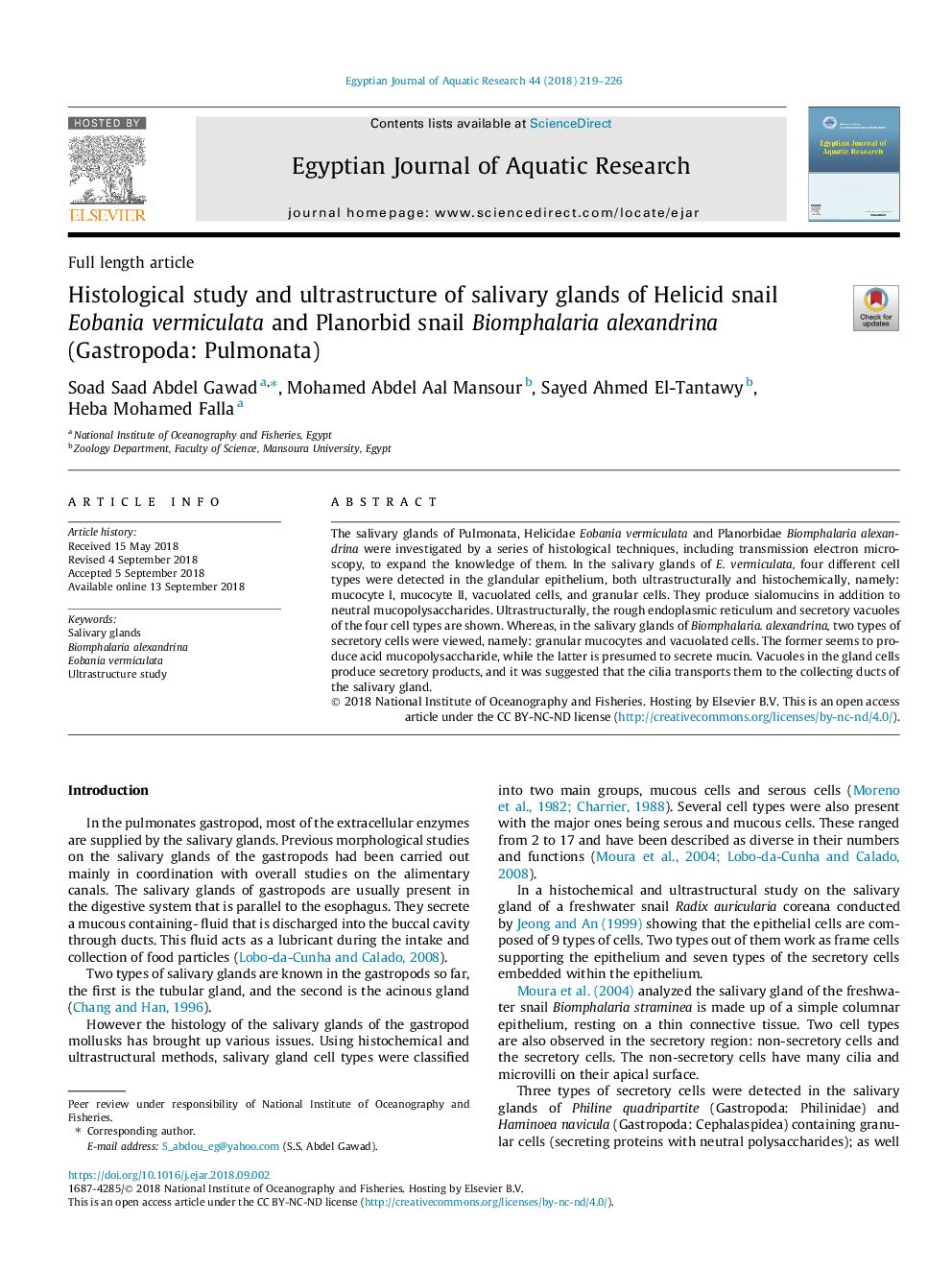| Article ID | Journal | Published Year | Pages | File Type |
|---|---|---|---|---|
| 10223708 | The Egyptian Journal of Aquatic Research | 2018 | 8 Pages |
Abstract
The salivary glands of Pulmonata, Helicidae Eobania vermiculata and Planorbidae Biomphalaria alexandrina were investigated by a series of histological techniques, including transmission electron microscopy, to expand the knowledge of them. In the salivary glands of E. vermiculata, four different cell types were detected in the glandular epithelium, both ultrastructurally and histochemically, namely: mucocyte I, mucocyte II, vacuolated cells, and granular cells. They produce sialomucins in addition to neutral mucopolysaccharides. Ultrastructurally, the rough endoplasmic reticulum and secretory vacuoles of the four cell types are shown. Whereas, in the salivary glands of Biomphalaria. alexandrina, two types of secretory cells were viewed, namely: granular mucocytes and vacuolated cells. The former seems to produce acid mucopolysaccharide, while the latter is presumed to secrete mucin. Vacuoles in the gland cells produce secretory products, and it was suggested that the cilia transports them to the collecting ducts of the salivary gland.
Related Topics
Life Sciences
Agricultural and Biological Sciences
Agricultural and Biological Sciences (General)
Authors
Soad Saad Abdel Gawad, Mohamed Abdel Aal Mansour, Sayed Ahmed El-Tantawy, Heba Mohamed Falla,
